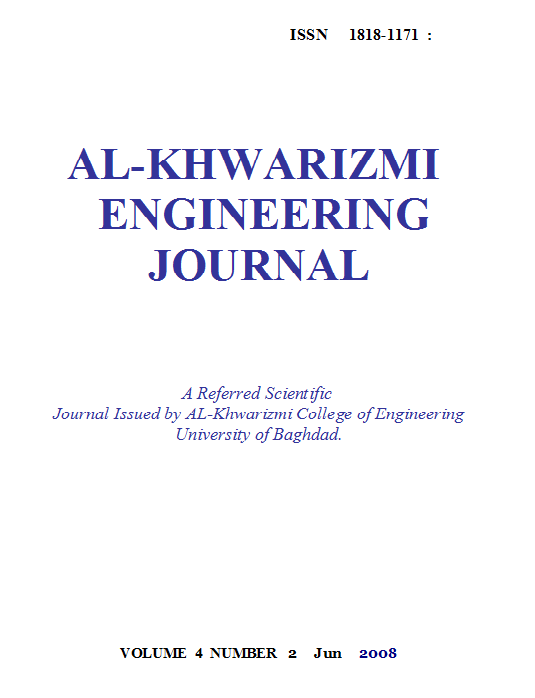Investigation of Load and Pressure Distribution on Wing with Wake Rollup for Low Speed Aircraft
Abstract
The presented work shows a preliminary analytic method for estimation of load and pressure distributions on low speed wings with flow separation and wake rollup phenomena’s. A higher order vortex panel method is coupled with the numerical lifting line theory by means of iterative procedure including models of separation and wake rollup. The computer programs are written in FORTRAN which are stable and efficient.
The capability of the present method is investigated through a number of test cases with different types of wing sections (NACA 0012 and GA(W)-1) for different aspect ratios and angles of attack, the results include the lift and drag curves, lift and pressure distributions along the wing span taking into the consideration the effect of the angles of attack and the aspect ratios on the wake rollup. The pressure distribution on the wings shows that there is a region of constant pressure on the upper surface of the wings near the trailing edge in the middle of the wing, also there is a region of flow separation on the upper surface of the wings. A good agreement is found between the presented work results and other from previous researches.
These results show that the presented method is able to capture much of flow over wings feature like separation and wake rollup.
Downloads
References
[2] Sighard F. Hoerner “Fluid – Dynamic Lift”, Practical Information on Aerodynamic and Hydrodynamic Lift, 1985.
[3] Jacob K. “Computation of the Flow around Wings with Rear Separation”, Journal of Aircraft, Vol.21, No. 2, February 1984, PP.97-98.
[4] Cebeci T., Lark R.W., Chang K.C., Halsey N.D. and Lee K. “Airfoils with separation and the resulting Wake”, Journal of Fluid Mechanics, Vol. 163, February 1986, PP. 323-347.
[5] Nilay Sezer-Uzol “High – Accuracy Wake and vortex Simulations Using a Hybrid Euler/ Discrete Voortex Method”, M.Sc. Thesis, Department of Aerospace Engineering, the Pennsylvania State University, May 2001.
[6] Moran J., Cole K. and Wahl D. “Analysis of Two-Dimensional Incompressible flows by a Subsurface Panel method”, AIAA Journal, Vol. 18, No. 5, May 1980, PP.526-533.
[7] Moran J. “An Introduction to Theoretical and Computational Aerodynamics”, John Wiley & Sons, 1984.
[8] Chang P. K. “Control of Flow Separation”, McGraw-Hill Book Company, 1976.
[9] Leishman J. G., Galbraith R. A. and Hanna J. “Modeling of Trailing Edge Separation on Arbitrary Tow-Dimensional Aerofoils in Incompressible Flow Using an Inviscid Flow Algorithm”, Glasgow University Aero Report No. 8202, May 1982.
[10] Chow C. Y. “An Introduction to Computational Fluid Mechanics”, John Wiley & Sons. 1979.
[11] John J. Bertin and Michael L. Smith “Aerodynamic for Engineers”, Prentice-Hall, 1979.
[12] Yeh and A. Plotkin “Vortex Panel Calculation of Wake Rollup Behind a Large Aspect Ratio Wing”, AAIA Journal, Vol. 24, No. 9, September 1986, PP 1417 – 1423.
[13] Suciu and L. Morino “Nonlinear Steady Incompressible Lifting – Surface Analysis with Wake Roll-Up”, AIAA Journal, Vol. 15, NO. 1, January 1977.
Downloads
Published
Issue
Section
License
Copyright: Open Access authors retain the copyrights of their papers, and all open access articles are distributed under the terms of the Creative Commons Attribution License, which permits unrestricted use, distribution, and reproduction in any medium, provided that the original work is properly cited. The use of general descriptive names, trade names, trademarks, and so forth in this publication, even if not specifically identified, does not imply that these names are not protected by the relevant laws and regulations. While the advice and information in this journal are believed to be true and accurate on the date of its going to press, neither the authors, the editors, nor the publisher can accept any legal responsibility for any errors or omissions that may be made. The publisher makes no warranty, express or implied, with respect to the material contained herein.












